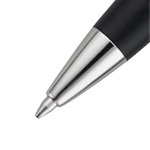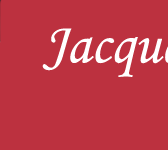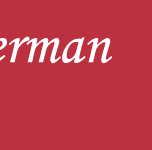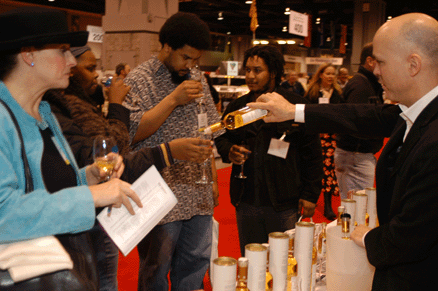Jackie's
Trip Connect Blog Clips
All files are in PDF format, Adobe Reader needed
Click
here to download Adobe Reader
May
21, 2007
Wine, Food, and
Life: Things I learned in Italy
Posted by Jackie Lieberman
|
 |
On
a recent trip to Italy that included Florence
and Rome, I learned a few lessons about
wine, food and life.
1. Slow down and relax. Meals in
Italy aren’t about refueling as
fast as possible—they are about
enjoying the food, enjoying the |
|
wine and, especially, enjoying the company.
Likewise, servers here don’t rush you
to order, eat and get out. For a multi-tasking
American like myself, who often eats lunch and
types at the same time, this can be a difficult
concept to swallow. Yet once I did, I found
myself loving the chance to linger over something
as simple as a brick-oven pizza and a glass
of Pinot Grigio. Which leads me to my next point:
2. Yes, you can—and should—have
wine with lunch. Italians certainly do. Again,
this requires sitting still for more than five
minutes—most of us aren’t about
to gulp down a glass of Chianti the way we might
chug a soda. Drinking wine is a ritual that
requires taking one’s time and automatically
induces relaxation, so you can forget furiously
dashing off to whatever is next on your “must-see”
list—you’re much more likely to
stroll.
3. While you’re sipping that glass
of wine, enjoy the moment. I drank some wines
in Italy that, in all likelihood, I will never
experience again. So many Italian wines are
artisan products; they differ from year to year
and barrel to barrel. Besides—even if
I could find that exact wine again, it wouldn’t
be with that meal, in that setting.
4. Yes, there are some expensive wines
that can only be described as phenomenal. But
wine does not need to be expensive to be good.
One evening in Rome, my husband and I meandered
into a rustic restaurant called Il Barrocao
and asked for a liter of the house white. Paired
with some amazing local specialties that included
a dish of simply grilled seafood, the crisp,
dry wine was one of the most enjoyable we’ve
ever had. |
|
|
May
11, 2007
At New York’s
Artisanal Bistro, Wine and Cheese Match Perfectly
Posted by Jackie Lieberman
|
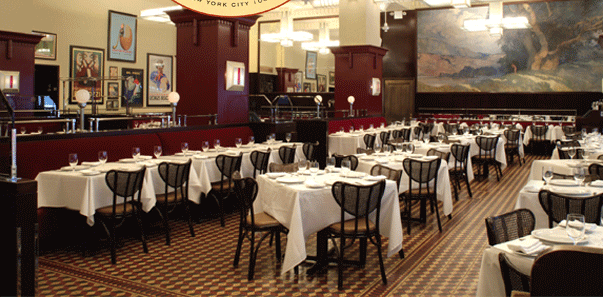 |
On
your next trip to New York City, head
over to Artisanal
Fromagerie & Bistro for an unforgettable
pairing of wine and cheese—the bustling,
often noisy grand café excels at
both. |
|
Among
a list of excellent French bistro fare, the
menu offers 11 cheese flights paired with
wines, plus one paired with beers, for $25
each. Each is thoughtfully combined to show
off the best elements of both the cheeses
and the wines.
Take,
for example, the Aromatic Trio: Stanser Schafchas
(a sheep’s milk cheese from Switzerland),
Red Haw (a cow’s milk cheese from California)
and Epoisses (a cow’s milk cheese from
France) are matched with 2005 Riesling Kabinett
Selbach Pierporter Michelsberg, 2003 Dolcetto
d’Alba Scarzello and 2005 Montes “Reserve”
Cabernet Sauvignon. The Ancient Tradition
offers Spain’s famous Manchego (sheep’s
milk cheese), Switzerland’s Sbriz (cow’s
milk cheese) and France’s Roquefort
(sheep’s milk cheese) with 2002 Robert
Stemmler Pinot Noir, 2002 Vino Nobile de Montepulciano
Avignonesi and 2002 Chateau Ducasse Sauternes.
In
the mood for something a little different?
Try the Unusual Ones: Cabecou Schnaps (a goat’s
milk cheese from France), Robiola la Rossa
(an Italian cheese made from a blend of sheep’s
and cow’s milk) and Percorino Tartufo
(a sheep’s milk cheese from Italy) paired
combined with 2003 Pinot Gris Domaine Armand
Hurst, 2004 Pinot Noir Logan “Sleepy
Hollow” and 2000 Barbaresco “Valeirano”
Ada Nada.
Want
to put together your own pairings? You’ve
got your work cut out for you, as you can
choose from up to 160 wines by the glass and
more than 250 varieties of cheese. Maybe when
I’ve run out of flights to try, I’ll
put together my own. In the meantime, I think
I’ll just sit back and let the experts
do the job they do so well. |
|
|
May
02, 2007
The Wines of Alto
Adige, Italy
Posted by Jackie Lieberman
|
| On
the southern side of the Alps lies Italy’s
Alto
Adige region, also known as Sudtirol. Here,
the locals speak German and wine making is a
3,000-year-old tradition. Visiting the area
may not be as simple as booking a vacation in
Napa, |
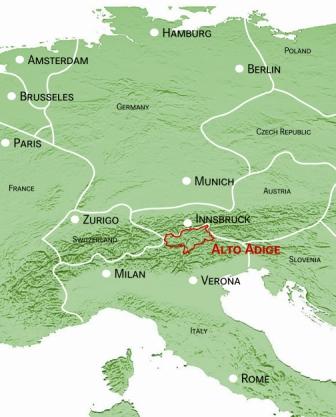 |
but you'll get a real feel for how this
European community thrives from its connections
to vinticulture.
Vineyards
range from 750 feet to 3,250 feet above
sea level, so it’s no wonder the
region is home to so many diverse wines.
What is really remarkable is that 95 percent
of the bottles from this region are designated
D.O.C., which means they can only be made
in
this region. (Other areas may try to duplicate
these wines,
|
|
but
they must do so under another name.) Pinot
Bianco, Chardonnay
and Pinot Grigio are the dominating whites
here, although Sauvignon Blanc is becoming
increasingly popular. You’ll also find
Riesling, Moscato Giallo and a few lesser-known
varietals: Sylvaner (a light, fresh wine with
a slight scent of hay); Muller-Thurgau (pale
and lightly aromatic); Kerner (spicy, dry,
with a hint of Muscat); and Veltiner (fresh
and fruity, with a light floral, herby scent).
|
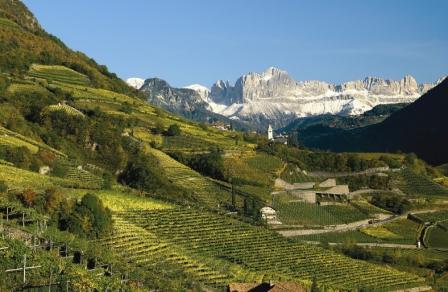 |
Perhaps
because I love aromatic wines, my favorite
white here is the Gewurztraminer, which
tends to be drier than in other regions,
making it a wonderful match for all
kinds of food. Andriano
Cantina’s 2005 Tor di Lupo
Gewurztraminer is a terrific example.
|
|
| In
reds, the native Schiava (a.k.a. Vernatsch)
black grape variety accounts for nearly a third
of the total vineyard area. Schiava wines can
range from pale red to ruby color and often
have a lovely marzipan finish. |
 |
Another
native grape, Lagrein, is also big here
and is used to created rich, rustic,
full-bodied wines, such as Laimburg
Province Winery's 2003 Barbagol
Lagrein Riserva. You’ll also see
some wonderful examples of the ubiquitous
Cabernet Sauvignon, Merlot and Pinot
Noir varietals. |
|
| Of
dessert wines, the most unusual (and my personal
favorite) is Moscato Rosa, made from the rare,
red Moscato grape. I recommend trying Abbazia
Di Novacella’s 2005 Praepositus Moscato
Rosa. Much like Alto Adige itself, this light-red
wine is as beautiful to look at is it is complex
and delicious. For more information about the
region and its wineries, visit www.altoadigewines.com. |
|
|
April
18, 2007
Summer Wine Festivals
- Monterey, Aspen, Brisbane and Others!
Posted by Jackie Lieberman
|
Ah,
summer—will it ever arrive? It may seem
like spring has just sprung, but it’s
never too early to get your tickets for these
wonderful summer wine festivals.
The Temecula
Valley Balloon and Wine Festival, Winchester,
California, June 1-3: The area is known for
its growing climate similar to the great wine
regions of the South of France, and this year’s
lakeside festival will showcase over 20 local
wineries. Book a hot air balloon ride ahead
of time to guarantee a romantic ride that includes
a bird’s eye view of nearby vineyards. |
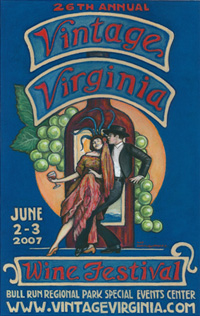 |
Vintage
Virginia Wine Festival, Centreville,
Virginia, June 2-3: Over 50 of the state’s
prominent wineries will pour over 350
selections. Seminars will take place in
tents all weekend where, among other subjects,
you can learn about Virginia’s long
history of winemaking. The family-friendly
event also offers a kids’ area with
games, activities and performers to keep
the little ones amused.
The
Monterey Wine & Fine Living Festival,
Monterey, California, June 7- 9: Over
200 California wineries—including
Korbel
Champagne Cellars and Ventana
Vineyards—will pour more than
|
|
800
wines at this highly educational event that
includes wine seminars, cooking demonstrations
and a live wine auction.
Food
& Wine Classic in Aspen, Colorado,
June 15-17: Food
& Wine magazine hosts this all-star,
all-out festival that includes such speakers
as Mark Oldman, Jacques Pepin and Mario Batali.
Cooking demonstrations, wine seminars and
reserve tastings are all on the menu. |
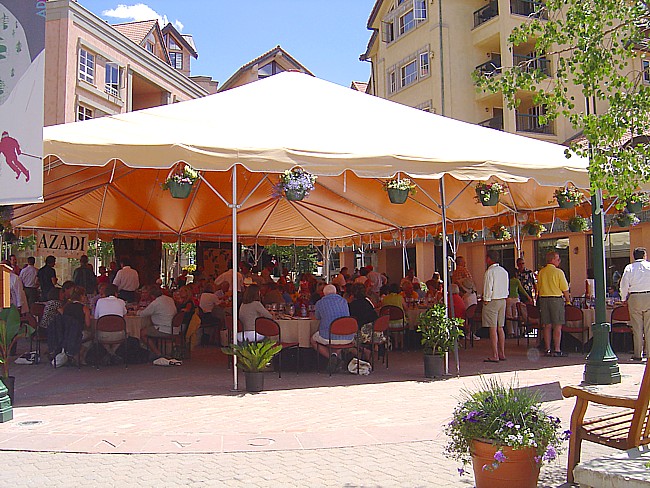 |
Telluride
Wine Festival, Telluride, Colorado,
June 28-July 1: This international wine
festival includes a celebration of wines
from Spain, a reserve tasting of the
wines of Bordeaux, seminars and wine
dinners and lunches prepared by award-winning
chefs. While you’re there, enjoy
the mountain village’s galleries,
shops and gorgeous scenery.
|
|
Brisbane
Fine Wine Festival, Brisbane City, Australia,
July 6- 8: It’s winter in Australia,
but you’ll still get a warm welcome
from Australian winemakers, who will be pouring
over 600 wines from around the country. And
while some of the wineries have silly-sounding
names like Lillypilly
Wines and Platypus
Lane, this is serious as well as fun:
Master classes on such subjects as Cabernet
Sauvignon, Semillon and a Pinot Noir “taste
off” are bound to fill up fast.
Finger
Lakes Wine Festival, Watkins Glen, New
York, July 20-22: The party kicks off with
an evening of fireworks, togas and New York
state wines from local wineries like Willow
Creek and Hickory
Hollow Wine Cellars. The weekend continues
with seminars, culinary demonstrations and
a tasters’ banquet.
Swiss
Wine Festival, Vevay, Indiana, August
23-26: Celebrate Switzerland County’s
cultural heritage at this family-friendly
festival that includes a wine pavilion featuring
local wineries, a grand parade and a grape-stomping
competition. |
|
|
April
05, 2007
Redwood Creek
Campfire Contest - Wines for the Mountaintop
Posted by Jackie Lieberman
|
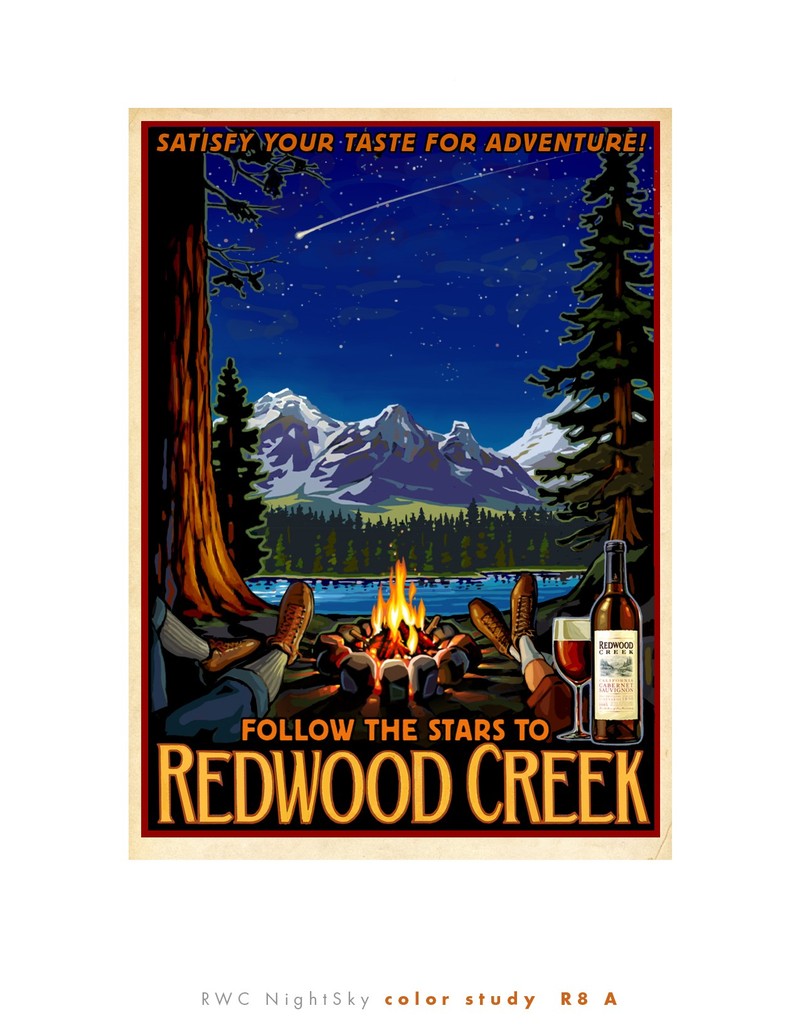 |
As
much as I love the city life and its fine
dining, I also consider myself to be an
outdoorsy kind of gal. Perhaps that’s
why so many of my vacations involve hiking,
sleeping in lean-tos and cooking over
a fire pit in places like New Jersey’s
Stokes
State Forest and the Upper Peninsula
of Michigan’s Van
Riper State Park. And sure, I love
hot dogs and toasted marshmallows. But
after a day in the woods, there’s
nothing like slow-cooked beef stew with
a mellow Merlot, or pan-fried trout with
a good, acidic Sauvignon Blanc. |
|
Apparently,
the folks at Redwood Creek Wines agree with
me. The California-based winery, whose vineyards
are located in the Central Valley between
the Pacific coast and the Sierra Mountains,
claims that their bottles are better suited
for a mountaintop than a tabletop.
And
so, they’ve issued a challenge: From
now until May 15, you can enter the Redwood
Creek Campfire Classic cookout contest. Just
log on to RedwoodCreek.com
and enter your unique campfire recipe, paired
with one of the Redwood Creek wines. On June
21, five finalists will be brought to New
York City to prepare their gourmet recipes
for a chance to win the $10,000 grand prize
plus a $5,000 donation to their favorite national
park. The public will also be invited to cast
their votes online for the winner of the $1,000
People’s Choice Award.
In
the meantime, Redwood Creek’s website
offers some inspirational recipes
from chef Bob
Blumer (a.k.a. the Surreal Gourmet). And
if you must have hot dogs, may I suggest a
glass of Pinot Noir to go with that? |
|
|
March
27, 2007
Wining and Dining
with Companions
Posted by Jackie Lieberman
|
When
traveling with a group—either for business
or pleasure—dining together is inevitable.
Because I’m known as “the one
who likes wine,” the wine menu often
winds up in my hands. This can be tricky.
Usually I’m expected to decide before
we’ve even seen the menu, so guessing
what everyone will order becomes part of the
equation. Even if I do know what everyone
is getting, chances are it will all taste
very different. So I’ve come up with
a few rules for mass-wine pairings.
1.
If the group is large enough, order two bottles—one
red, one white. The old rule that you should
only drink red wine with red meat and white
wine with fish and poultry doesn’t really
hold true, but your some of your dinner companions
probably still believe in it. And even if
they are open-minded enough to try a red with
their snapper, some people prefer one color
to the other.
2.
“When you don’t know, order Pinot.”
Pinot Noir is light, crisp, and pretty much
universally liked. It’s also one of
those wines that goes with everything, so
you're safe if somebody at the table orders
the curried lobster while someone else gets
steak topped with garlic butter.
3.
Highly flavored ethnic foods tend to go well
with certain types of wine. For instance,
I like to order Riesling with Chinese—the
subtly sweet wine stands up to the bit of
sweetness in most Chinese dishes while it
cools the spice. Riesling also works well
with Indian and Thai coconut curry dishes
for the same reasons. If the cuisine tends
to be more spicy/herby, like Jamaican, I tend
to go with an oaky Chardonnay. Keep in mind
that lighter wines work better with spicy
food—spicy wines usually clash with
it.
4.
Finally, don’t panic if you can’t
figure out the perfect match. No meal has
ever been ruined because the wine didn’t
match the food. No matter what you choose,
food always tastes better with wine and vice
versa, so just order, smile, and enjoy the
fact that your travel companions are bound
to think you know more than they do, even
if you don’t. |
|
|
March
14, 2007
Sake, Demystified
Posted by Jackie Lieberman
|
Japanese
rice wine—called sake, or sometimes nihonshu—is
increasing in popularity, and not just at sushi
bars. Whether you’re visiting a traditional
Japanese restaurant in Tokyo or sitting down
for Asian fusion at Ruby Foo’s in New
York City, someone is bound to hand you a long
list of sakes to choose from.
Like any wine list, it helps to have a knowledgeable
waiter, but the labels offer many clues as to
what each one is like. First, take a look at
the sake’s “meter value,”
or nihonshu-do. This refers to how dry or sweet
the sake is. A value above two is considered
dry, while anything below two is considered
sweet. Seimaibuai refers to the degree to which
the rice used to make the sake is polished.
The more polished the rice, the more “premium”
the sake is considered to be. A higher percentage
means that more of the grain of rice is left,
so a lower percentage is considered better quality.
Also note the level of acidity—a level
of two or below is considered good quality.
Other helpful terms include: futsushu—table
sake koshu—aged at least three years namazake—unpasteurized
nihonshu—sake made in Japan seishu—refined
nigorizake—coarsely filtered, |
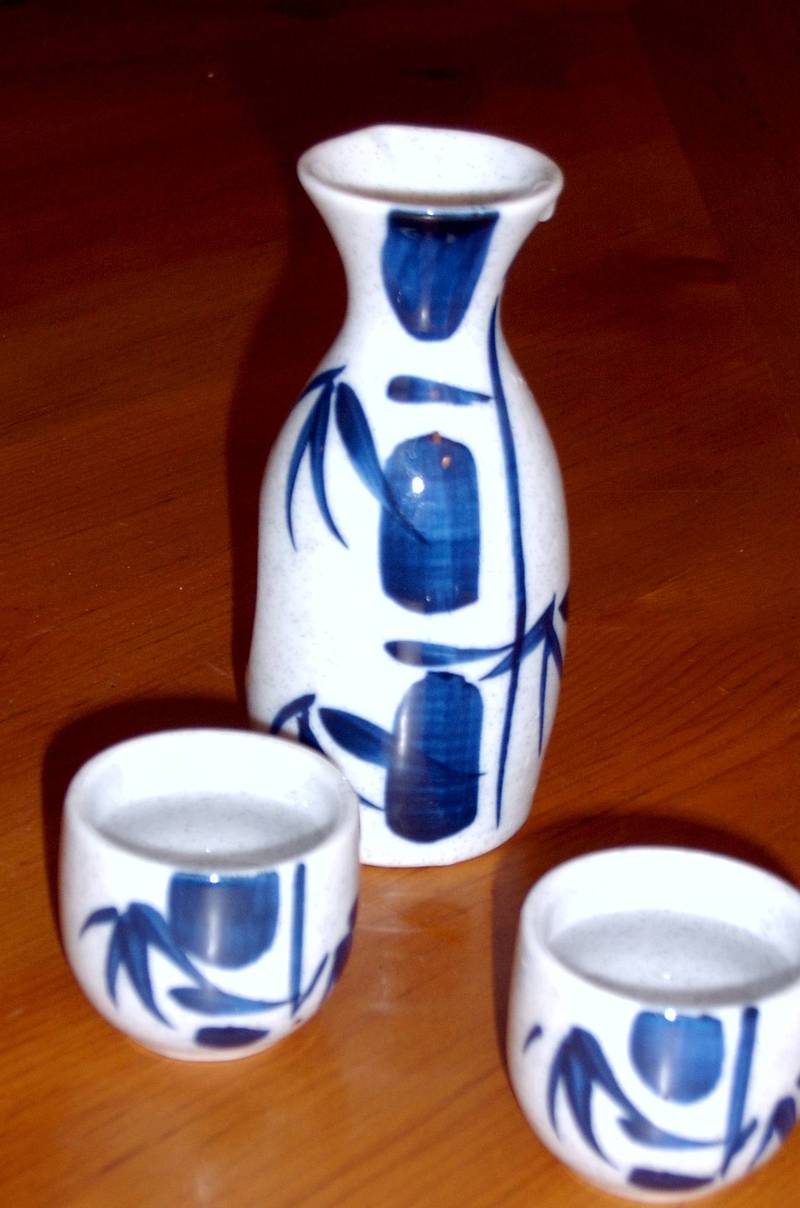 |
leaving
tiny bits of rice that give the sake a
shimmery appearance taruzake—aged
in cedar casks.
If all this seems a bit daunting,
just remember: When in doubt, order a
sake that is served chilled. While hot
sake can be very nice on a cool day, the
good ones are almost always served cold.
And if you really want to look like you
know what you’re doing, consider
this bit of Japanese etiquette: It’s
considered polite to pour your neighbor’s
drink, and for your neighbor to pour for
you. That’s why the cups are so
small. The more opportunities you |
|
have
to pour a glass for someone else, the more
friendly and polite you have the opportunity
to be. If you find yourself low on sake, simply
lift your glass to allow someone else to pour
for you. |
|
|
February
27 , 2007
"Hidden"
winery in Napa Valley
Posted by Jackie Lieberman
|
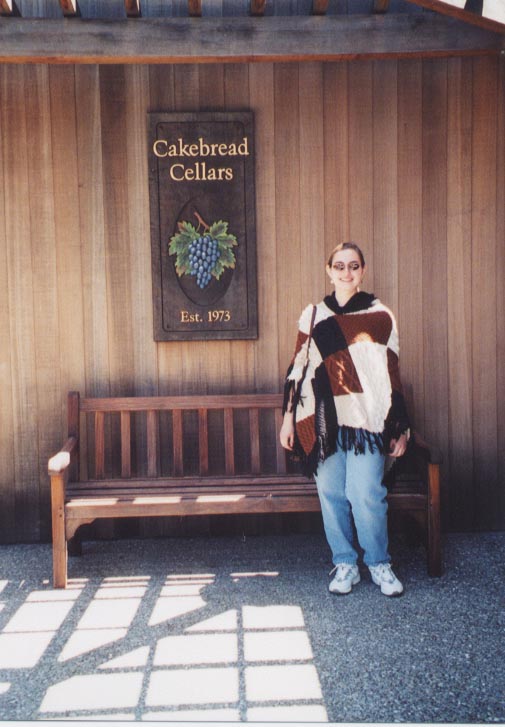 |
Visiting
Napa Valley? It’s easy to drive
past the small Cakebread
Cellars winery, but it sure would
be a shame. The grounds are gorgeous,
the staff is wise, and the wine is excellent.
Tours and tastings are designed for small
groups, so guides have plenty of time
to answer your questions. Call in advance
to book your appointment (800-588-0298).
There are several options to consider:
Tour
and tasting, 10:30 am, daily. $10. Their
knowledgeable staff |
|
will
explain the history of Napa Valley wines while
leading you through the grounds. Then you’ll
go inside to see how the grapes are made into
wine, stored, and bottled. Afterward, it’s
on to the tasting room to try and compare
favorites like Sauvignon Blanc, Chardonnay,
Pinot Noir and Merlot. You may also try a
blend, like their Rubaiyat, made from Pinot
Noir, Syrah, and Zinfandel—a juicy,
slightly spicy wine with notes of cherries
and vanilla.
Tastings,
10 am to 4 pm, daily. $10. This is the abbreviated
version—a great way to try their wines
and learn a bit about the family’s vineyards
when you’ve got a lot of places to visit
and not too much time.
Food and wine pairing, 11 am, Thursdays
and Fridays. $20. The name may be purely coincidental,
but Cakebread wines are known throughout the
restaurant industry as being terrific with
food. (One reason you’ll see Cakebread
more on wine lists than in stores.) You’ll
get a quick tour of the winery, then sit down
to enjoy seasonal foods made with fresh ingredients
from the Cakebread garden and learn some helpful
tricks for pairing food with wine.
Sensory evaluation experience, 10 am,
Fridays, Saturdays, and Sundays. $20. Whether
you’re a wine connoisseur or totally
clueless, everyone can learn something from
this 90-minute tasting, designed to teach
visitors about how to sniff, taste and evaluate
wines. |
|
|
February
05 , 2007
Coming soon—wine,
food and fun in Washington, D.C.
Posted by Jackie Lieberman
|
| |
telling that “wine” comes before
“food” in the title--indeed, while
amazing food will be a big part of the experience,
it’s the wines that take center stage.
The activities kick off Friday night with
the Grand Cru Wine Lounge Opening Night and
Party, where munchies made by top local chefs
will be paired with great vintages, and prominent
wine experts will be on hand to explain what
you’re drinking. ($150 in advance, $180
after March 2.)
Grand tastings will be held Saturday from
3 pm to 7 pm and Sunday from 2 pm to 6 pm,
where more than 280 wineries from around the
world will pour samples of over 1,100 wines.
If there’s a style you’ve always
wanted to try, chances are you’ll find
it here. More delectable nibbles will be served.
($65 for a one-day pass in advance, $80 after
March 2. Or $85 for a two-day pass in advance,
$100 after March 2.)
Want
to gain more in-depth knowledge? Guided tastings
and seminars will take place all weekend.
For example, you can learn about Petite Sirahs
with PS I Love You (the advocacy group for
varietal), discover the changing face of Champagne
with Suzanne McGrath of WineReviewOnline.com,
explore varietal ports like “Zinful
Delight” paired with chocolate and cheese
with David Hunt of Hunt Cellars, or brush
up on your basics with a crash course in wine
appreciation hosted by wine columnist Leslie
Sbrocco. (Prices vary.)
Got
more than a weekend to spend? On Tuesday,
Wednesday and Thursday before the big event,
top local restaurants will participate in
International Wine and Food Festival Week,
so you can see Washington, D.C., during the
day and enjoy a series of wine dinners at
night. |
|
|
January
22, 2007
At Bern's Steak
House in Tampa - 6900 Wines to Choose!
Posted by Jackie Lieberman
|
When
it comes to wine lists, it’s nice to
have choices other than “Merlot or Chardonnay?”
So I was thrilled when I made the trip to
Bern’s
Steak House in Tampa, Florida. Its wine
collection is the largest of any restaurant
in the world, with 6,900 labels to choose
from, 200 of which are available by the glass.
As soon as we were seated, I knew I had a
tough decision to make. The wine list had
the heft of a hardback novel. I might have
read it all night—it’s interesting
enough—if not for the helpful staff,
who excel at finding a wine to match your
palate as well as your plate. (But be sure
to tell them you’re serious about your
vino—when I asked for “something
I haven’t tried before,” our waiter’s
first suggestion was a red zinfandel.) In
the end, the four of us at our table each
chose a different wine by the glass to sip
and share, allowing for far more tasting opportunities
than a single bottle. The wine-loving food
was simple and exquisite, focusing classic
preparations of steak and seafood, with seasonal
vegetables grown on their own organic farm
and sprouts grown right in their kitchen.
I ordered the Chateaubriand topped with garlic
butter, and I wasn’t disappointed. After
dinner, guests are offered a tour of the kitchen
and on-site wine cellar. (A much larger storage
facility across the street holds most of their
collection). Don’t miss it. I almost
regretted my steak when I saw just how fresh
the fish were—any that weren’t
under the broiler were still swimming in a
gigantic tank. Ah, well. Next time, I thought.
Then it was upstairs to the dessert room,
with its cozy private booths and impossible-to-resist
dessert menu, complete with another book of
dessert wines and specialty drinks you won’t
want to miss. A full stomach meant splitting
the luscious chocolate soufflé and
a glass of port with my husband. With so many
choices and only so much one can eat and drink
in an evening, I know I’ll be back for
more. |
|
|
|
